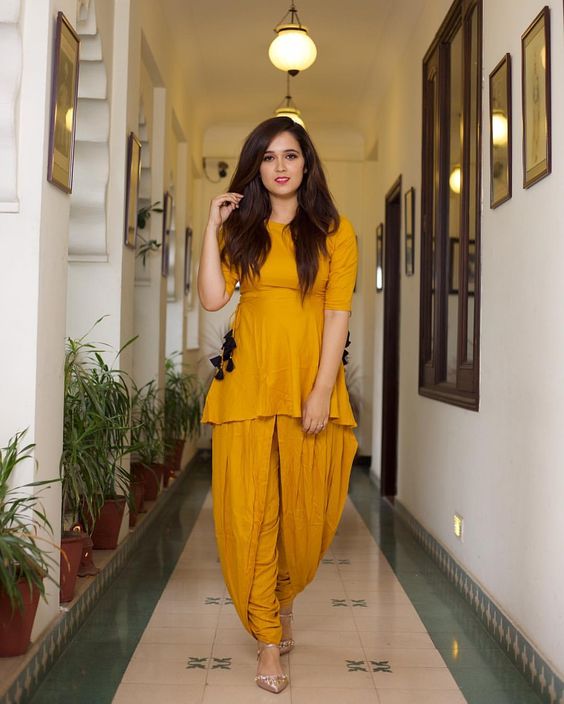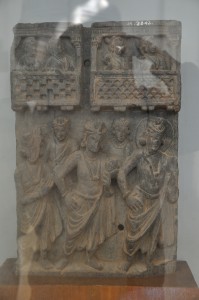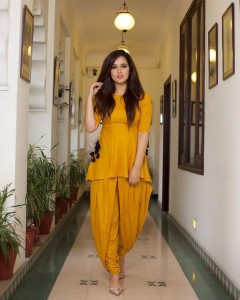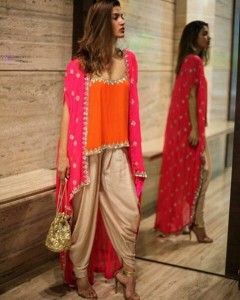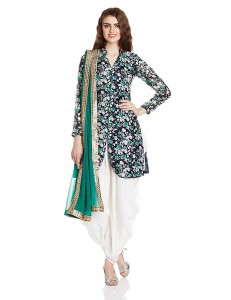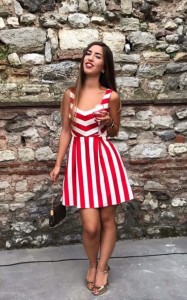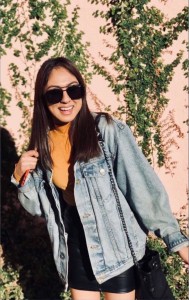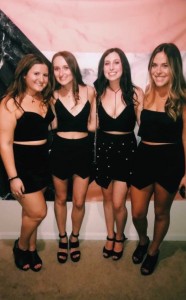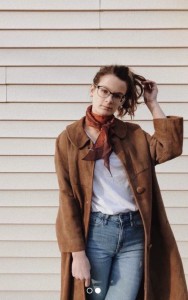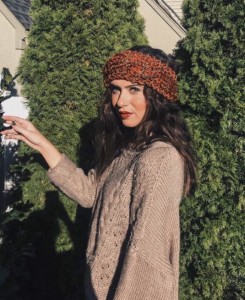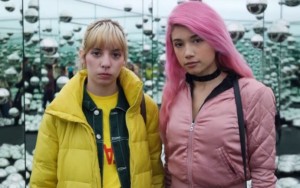Have you ever wondered about the evolution of Indo-Western fashion? Indo-Western fashion is the combination of traditional Indian and Western styles. Fashion ID Style Director Shalini Baronia takes over to share with Fashion ID readers her knowledge of Indo-Western fashion and the evolution of Dhoti and Kurta clothing garments. For more Indo-Western fashion inspiration, be sure to follow Style Director @ShaliniBaronia on the Fashion ID app!
Dhoti + Kurta
Indo-Western fashion has evolved dramatically over time. One way that it has changed has been through the arrival of new trends and the evolution of the Dhoti Style Pant and short Kurta.
The Dhoti, also known as panche, vesti, dhuti, chaadra and panchey, is a traditional garment worn in the Indian subcontinent. It is a rectangular piece of unstitched cloth, long, wrapped around the waist and the legs and knotted at the waist. While the Dhoti is a garment that primarily men wear, it has now become a integral part of women’s wardrobes too. The fusion of Indian and western wear i.e. Indo-Western outfits initially started with pairing up of Dhoti pants with Kurtis, crop tops and western tops.
Similarly, the straight-cut kurta is a loose shirt falling either just above or somewhere below the knees of the wearer and is traditionally worn by men. However, women also wear the straight-cut kurta or its shorter version, the kurti. They were traditionally worn with loose-fitting pajama (kurta-pajama), loose-fitting shalwar’s, semi-tight (loose from the waist to the knees, and tight from the calves to the ankles) churidars or wrapped-around dhotis but are now also worn with jeans. Kurtas are worn both as casual everyday wear and as formal dress.
Imported straight-cut kurtas were fashionable in the United States in the 1960s and 1970s, as an element of hippie fashion, fell from favor briefly, and are now again fashionable. Women from the Indian subcontinent may also wear this Western adaptation of fashion in the Indian subcontinent.
Some styles button or are tied at the shoulder seam and have plackets rather than slits. The opening may be centered on the chest or positioned off center.
Traditional forms of kurta do not have a collar. Modern variants may feature stand-up collars of the type known to tailors and seamstresses as “mandarin” collars. These are the same sort of collars seen on achkans, sherwanis, and Nehru jackets.
WAYS TO WEAR YOUR KURTIS:
- With dhoti pajamas. Dhoti pajamas are one recent sartorial inventions that we just can’t not fall in love with. They’re futuristic and yet, have a very desi touch to them.
- Choose dhoti pajamas that are either the same color as the kurti or a color that complements them. Unlike leggings and Patiala’s, you can’t just wear white or black dhoti pajamas under all your outfits if you want to bring out their beauty.
Below, check out a few examples of the evolution of Dhoti Kurta ranging from old to modern styles.
FASHION ID STYLE DIRECTORS
Looking to learn new skills (Like writing for our blog), or get your foot in the fashion industry? Look no further – our Fashion ID Style Director program is calling your name. With only 3-4 hours per week, you can be the face of fashion on our budding platform and gain tons of connections with fellow fashion lovers.
Become a part of our Style Squad and apply to become a Fashion ID Director today!
- Style Director Asli Sahin (@EASLISAHIN)
- Style Director Toonan Khandaker (@OhhToonan)
- Style Director Julie Rajman (@JulieRajman) heads out for a GNO wearing head to toe black with friends!
- Style Director Logan Wilson (@LillWillogie)
- Style Director Isabella Rodier (@IKRODIER)
- Style Director Lina Mayorga (@LinaMayorga)
Xoxo, Fashion ID

